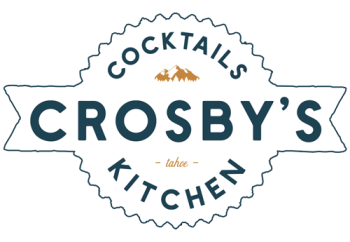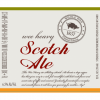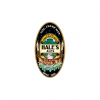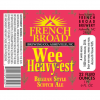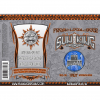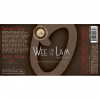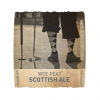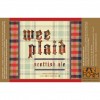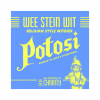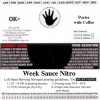If you thought that Benevolence and CBC’s Heather Ale were pushing the envelope of strange creations from the extreme end of the beer spectrum, this is where we take that envelope, tear it into little bits, and light it on fire. The funny thing is, this beer is by no means new…
Welcome to the world of beer, circa 1200 AD.
Gruit Ale (pronounced “grew-it”) was what beer was throughout the Middle Ages in Continental Europe. Hopped beers came much later, and that story is perhaps too long to tell on this one page (but ask me and I’ll tell you, over a pint or two of gruit).
Gruit is primarily a combination of three herbs: sweet gale (Myrica gale), yarrow (Achillea millefolium), and wild rosemary (Ledum palustre). Additionally, individual brewers would add other herbs and spices as they liked to produce unique flavors and aromas in their beer. These herbs were known for their mildly stimulating properties, and when added to fermented beer were known to have said inebriating qualities amplified. I will make a bold statement now: Gruit Ale may be highly intoxicating and aphrodisiacal when consumed in significant quantity. Historically, it has been said to stimulate the mind, create euphoria, and enhance sexual drive. When you consider that hops contain large quantities of estrogenic and soporific compounds (in other words, they dull sex drive and make you sleepy), one wonders how that strange bitter plant became not just dominant but exclusive in brewing much the world over. All of the above herbs, hops included, have known culinary and/or medicinal benefits. And all have been used by humans for tens of thousands of years. They are all known to be bacteriostatic (meaning they keep beer from going bad) and offer bitter or astringent compounds to balance the sweetness of malted barley.
Anyone already a fan of our Heather Ale will find this beer not too far of a stretch. Utilizing the above-mentioned herbs plus wild licorice root and nettles, it has an interesting and pleasant aroma and flavor of green- (think good Japanese Sencha) with overtones of herbal- tea (think Echinacea/mint/chamomile/licorice). Of course, this is balanced by the faithful familiarity of Scottish and British pale and dark caramel malted barley, along with wheat malt and oats. It is medium in body, and deep amber in color. Full, rich, and malty on the palate and smooooth in the finish. And it is good.
Cambridge Brewing Company
